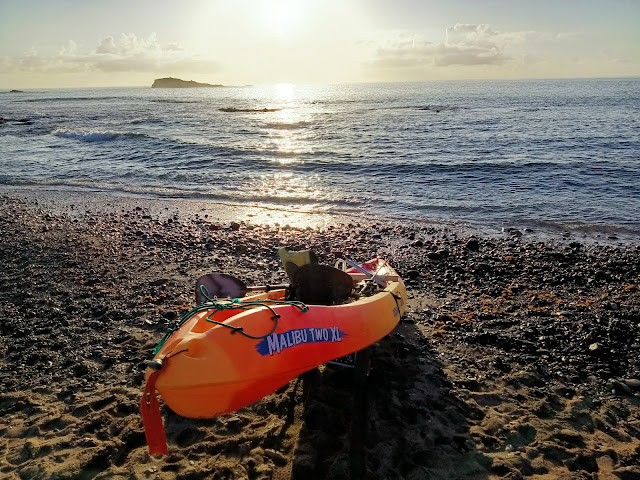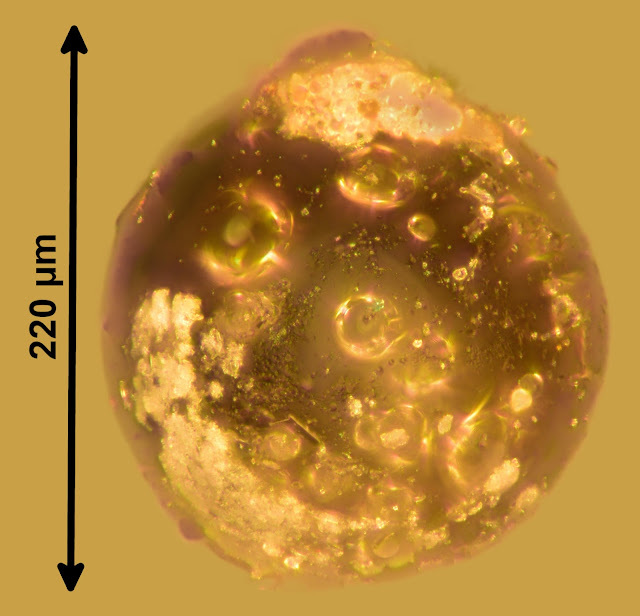New deep sediment recovery

On 19 September 2022, I went for a new sediment recovery. The goal is to find micrometeorites in these sediments. This time I decided (or I tried) to make it easier, and funnier. I went using my canoa, directly from the shore next to my home. The place where I live is extremely windy and the sea is normally wavy with a lot of current. And I like it. But for recovering sediments, this is not helpful. I had to wait for a very calm day. On 19 September 2022, the weather was perfect for this purpose. No wind, no wave. Here, this only happens a few days each year. The place where I decided to go is: 27.8658 N -15.3604 W. This is 2.5 km away from an hostil shore, and 3.0 km away from the place where I can put my canoa into the water. Here is a depth profile of the place. The depth was about -75m so I could use a kind of enhanced fishing rod with reel, and a container instead of a hook. This is the picture I took just before I started to recover sediments: The water conditions can change very...





